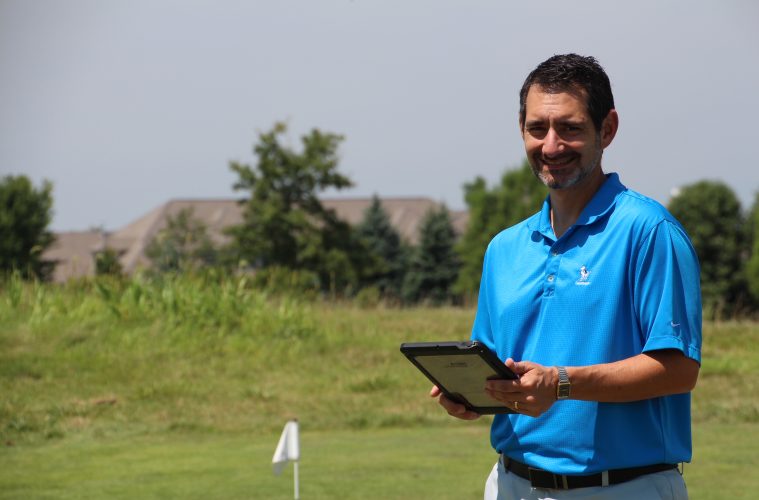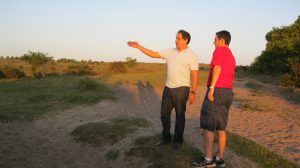JASON A. STRAKA
Principal, Fry/Straka Global Golf Course Design
President, American Society of Golf Course Architects
Interview with Matt Ward
BACKGROUND:
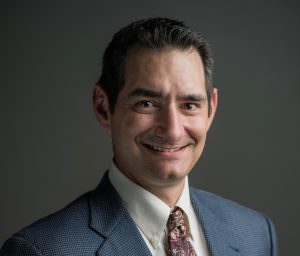
THE STRAKA STORY:
I love the outdoors. I grew up fishing, camping, canoeing, hiking, hunting, skiing … and playing golf. I also enjoyed design, art and science, and was good at them. During my senior year in high school, I was contacted by Cornell University, which I never thought I had a chance at being accepted coming from a small school in rural Northeast Ohio. I fell in love with the beautiful campus and the rural area surrounding Ithaca, NY and all the outdoors opportunities it provided.
I was also taking classes under Dr. Norm Hummel, who was the leading soil scientist in the sports and golf field industry at that time. I ended up staying at Cornell to earn my Master’s with Dr. Hummel as my advisor. My master’s education covered a diverse range of topics and study to include agronomy research on putting greens, wetland science, community planning and more. It was also Dr. Hummel who introduced me to Dr. Mike Hurdzan.
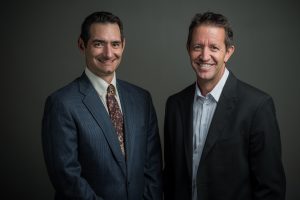
The focus of my master’s degree was indeed environmental golf course design. I needed to develop a thesis project however on the subject. So I turned to Mike Hurdzan, who was regarded as world’s foremost authority on the subject. He and his firm were just undertaking a project called Widow’s Walk Golf Course, in Scituate, MA. Widow’s Walk was to become North America’s first environmental demonstration and research golf course. My Master’s thesis ended up being on the development of Widow’s Walk.
A few months after completing my thesis, Mike and Dana offered me a position with their company back in Columbus, Ohio, where I have lived for the past 26 years. I continued both my mentorship and my professional career under Mike and Dana until Dana and I became business partners in 2012. We are currently working around the world on all sorts of interesting projects.
You wake up n the morning — what’s the driving passion?
I usually am up very early to catch a flight or get on the job site, so my first driving passion is to get a cup of coffee! Seriously though, my passion is my family, first and foremost.,I want to be a good husband and father, providing for my family and leading by example through my everyday actions.
You were just recently elected president of the American Society of Golf Course Architects (ASGCA). What will be your chief priority to accomplish in your term of office?
I have a number of important goals. For one, I want to bring as many qualified designers into the society as possible, regardless of how they practice. Diversity of members in any organization is a strength.
There’s been much discussion recently with the USGA and R&A both confirming their concern on the enhanced distances that golf balls travel and in the manner by which clubs today produce such results. Is the ASGCA in favor of a ball rollback — at least for elite competitions — and how much of a likelihood of a rollback is likely within the next five (5) years?
I don’t think there is a consensus within ASGCA at all. We do often discuss the topic, and even serve on the USGA Distance committee. Most members would likely prefer some sort of limit on technology, but not all. Some members believe that distance for amateur golfers makes the game more fun, and fun to watch with the long professional players.
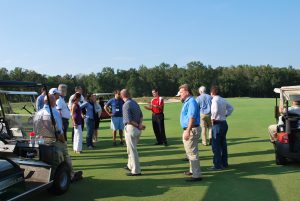
The architects that inspire you the most are who and in what specific way?
I have quite a few. McDonald, Raynor and Banks for their ability to use template holes to create world class courses on a variety of sites. Coore & Crenshaw for their ability to find and use the land’s subtleties, and for their ability to create beautifully artistic courses that meld into the natural environment. And Tom Fazio and company for their ability to create something awesome out of nothing.
The three major impediments to golf’s growth in terms of overall participants is the time it takes to play the game, the overall costs associated with it and the difficulty in playing the game. What role do you see the ASGCA playing in regards to those issues?
Our members volunteer on countless boards, committees and grass roots programs that work on these very issues. Some examples are “Course of the Future” (https://asgca.org/course-of-the-future/), We Are Golf (www.wearegolf.org), Get Golf Ready, and the Longleaf Tee initiative (http://www.longleafgfc.com/longleaf-tee-system). These programs are just the tip of a very large iceberg.
The usage of water has clearly elevated it presence over the last number of years. Climate change is now accepted among most experts as a critical concern. How does golf justify its usage of water given other critical needs and can the relationship between golf and environmentalists truly work in unison in this topic?
The relationship can very much work. Most of golf does a great job of limiting water usage by reducing irrigated turf area, installing irrigation systems that can micro-manage water, using sensors that monitor soil water amounts, installing soil amendments that hold water and lots more.
For those courses that don’t use these technologies they will have to soon, or they will eventually cease to exist. Climate change is a major issue in golf. Drought, more frequent, intense and prolonged rain events, flooding, rising seas and groundwater, and rising temperatures are acute threats to many golf courses.
What’s the biggest mistakes golf clubs of all types make when dealing with long range planning and what specific steps should clubs carry out before engaging in any number of consequential actions?
Owning a golf course is sort of like owning a home. If you own a home you expect to replace the roof, furnace, air conditioner, carpets, etc. at different times, and you know relatively how long these items last before needing replaced. The same could be said of a golf course’s irrigation system, sand bunkers, tree growth, grasses and more.
Club’s often fail to plan properly to replace items that eventually are going to wear out. We also see a club install a new irrigation system and then try to figure out what’s next. They often end up ripping out new irrigation to move bunkers, add new tees, etc., which is just wasteful. They get the cart before the horse.
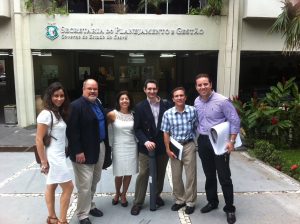
If you could change one thing in golf unilaterally — what would it be and why?
I’d like to have affordable, accessible golf to anyone that wants it. I grew up with a junior pass at an excellent local public course that cost just $150 for the year! I also had over 30 affordable public courses within a 30-minute drive of my house! I didn’t live in a very affluent area either. I wish everyone could have that opportunity to have golf part of their lives.
You’ve got one last round of golf to play and have to choose a course you’ve never played. Where do you play and what three (3) people join you in your foursome?
It might be cheating because the course no longer exists, but I say the original Lido on Long Island. I’ll keep the remainder of the 4-some secret.
Best advice you ever received — what was it and who was it from?
Came from my father. He preached life ‘balance’ to me since I was in high school and he still does. Nowadays it’s considered work-life balance. He always told me to work hard, play hard and lead a balanced life.


